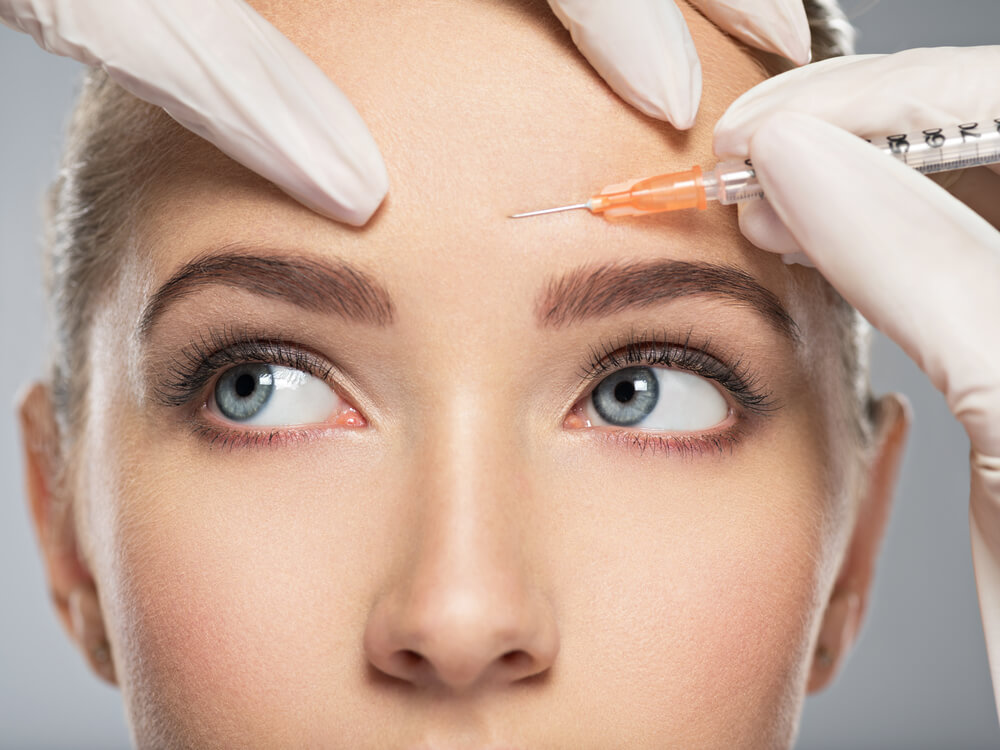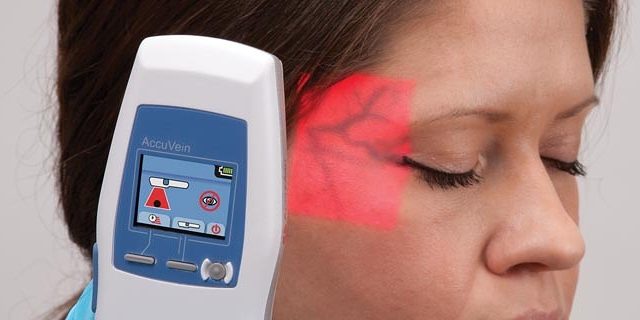Botox is a popular treatment for wrinkles, but it’s not without risks. Here are some of the most common Botox danger zones.
The forehead and crow’s feet
The forehead and crow’s feet are the two most common areas that Botox is used to treat wrinkles. However, if you have any concerns about having this procedure done in these areas, it’s best to talk to your doctor beforehand.
The jaw line
Botox can be used on the jaw line to lift and tighten the skin in this area. However, if you have any type of TMJ disorder or bruxism (grinding your teeth), then this procedure may not be appropriate for you.
The neck area
Botox can be used here as well but only when injected into deeper areas such as the platysma muscle which is located below the chin and above the clavicle bone (collarbone). If you’re concerned about having Botox injected into your neck area then it’s best to talk to your doctor first before proceeding with treatment
When it comes to Botox, there are certain dangers that you need to be aware of. Like any other drug or procedure, Botox has side effects and complications.
The most common complication is bruising and swelling at the injection sites. This can occur if the needle is not inserted properly or if there is too much Botox injected at one time. Bruising may last for up to two weeks but usually resolves within one week after treatment. Swelling typically lasts for two days and may be worse in some people than others.
In addition to bruising and swelling, other possible side effects include pain, droopy eyelids, double vision, red eyes and headaches. These side effects are temporary and will resolve on their own once the Botox wears off.
Serious complications from Botox injections are rare but they do happen from time to time so be sure to inform your doctor about any medical conditions or allergies that you have before treatment begins.
The most common side effects of Botox are temporary, mild and can be managed by your doctor.
The following are the most common side effects of Botox:
Pain or tenderness at the injection site. This is usually mild and goes away on its own in a few days.
Headache (from the procedure itself). The headache should go away within 24 hours. If it doesn’t, see your doctor because there may be an underlying cause.
Injection site bruising and swelling (from the procedure itself). It will take a few days for these symptoms to go away completely. Bruising may be more noticeable in darker-skinned people who have a higher risk of developing hematomas (ruptured blood vessels) than light-skinned people do.
Botox is the most popular cosmetic treatment in the United States. It’s also one of the most controversial.
The FDA has issued warnings about Botox’s potential side effects and risks, but it’s not clear how many of these are legitimate. The fact that Botox is injected into your face makes it more dangerous than other cosmetic treatments. However, if you follow these safety tips, you can avoid serious complications:
Avoid injecting Botox near your eyes or forehead. The muscles around these areas are very delicate, and injecting them can cause visible lines to form.
Avoid injecting Botox near the mouth, cheeks or nose if you have a history of migraines or allergies. These areas are more sensitive than others on your face and may be prone to swelling after injections.
Don’t get Botox from multiple doctors without first informing them about previous procedures — especially if they have been performed by different health care providers within the past 12 months!
Botox isn’t recommended for people with certain health conditions or allergies:
Where should you avoid Botox injections?
Botox injections are great for reducing the appearance of wrinkles and fine lines, but they aren’t right for everyone. If you have certain conditions or circumstances, you should avoid Botox injections and find a different type of treatment instead.
Before you get Botox, make sure that it’s safe for you to use. Here are a few situations where Botox injections may not be suitable:
You have an infection in the area where you want to be injected. You must wait until the infection clears before having Botox injections because it can make the injection more painful or cause side effects like bruising or swelling.
You’re pregnant or breastfeeding. Avoid getting Botox injections until after you’ve given birth and nursing has ended (about six months).
You have any form of cancer that’s metastasized (spread) to your face. There have been some concerns about whether botulinum toxin could spread cancer cells if injected into areas with tumors, but more research needs to be done on this topic before doctors can recommend it as an effective treatment option for such patients in particular.
What happens if you inject Botox too deep?

When Botox is injected too deep, it can cause a variety of complications. One of the most common is that the Botox will not work as well. This is because the muscle has been paralyzed too far away from where it was intended to be treated, so it doesn’t have much effect on the targeted muscle. Another common complication is that the Botox will not be absorbed by the body and will remain in the tissue, causing inflammation and possible infection.
In some cases, these complications can be serious enough to require medical attention. In other cases, they may simply cause some mild discomfort or cosmetic issues like bruising or swelling.
If you’re concerned about whether your Botox injection went too deep, talk to your doctor or another medical professional about what happened and how best to proceed next time you need to get another injection.
What happens if Botox gets in your bloodstream?
The FDA has approved Botox for a variety of medical uses, including the treatment of facial wrinkles. Botox is a type of toxin that can cause muscle paralysis.
The most common use of Botox is to treat the skin condition known as frown lines. These are lines that appear between the eyebrows when you frown. The injections can help relax the muscles in your forehead and prevent them from contracting, reducing the appearance of frown lines.
Botox is also sometimes used to treat excessive sweating (hyperhidrosis), muscle spasms and migraine headaches.
Botox has been used safely for more than 25 years with few side effects reported by people who receive it, but there are risks associated with any injection into the body that may lead to an allergic reaction or infection at the site where it was injected. But if Botox gets in your bloodstream, it could cause serious problems such as inflammation or paralysis in other parts of your body or even death.
Injecting Botox Into Your Bloodstream
When Botox is injected into your body, some of it will get absorbed into your bloodstream through your skin or muscle tissue and travel throughout your body before being metabolized by your liver and kidneys into harmless compounds called metabolites
Can too much Botox be harmful?

Yes, it is possible to get too much Botox. Too much Botox can cause drooping eyelids, difficulty closing eyes completely, and muscle weakness in other areas.
Botox is a purified protein that is injected into muscles to temporarily block them from contracting. This drug has been used for many years in the treatment of neurological disorders such as cerebral palsy and chronic spasticity. The FDA approved the use of Botox for cosmetic purposes in 2002.
Botox is most often used in the treatment of frown lines, crow’s feet, forehead wrinkles and upper lip lines. It can also be used to treat excessive sweating and muscle spasms caused by multiple sclerosis and cerebral palsy.
The effects of Botox typically last 3-4 months after injection. Because of this short-term effect, it’s very important that patients only have injections done by licensed physicians who are experienced with using Botox for cosmetic purposes.
Can Botox affect your heart?
Botox is a drug that is injected into the skin to temporarily eliminate wrinkles. The wrinkle-free results have made it popular with celebrities and other people who want to look younger. While Botox has been used for several years, there may be some risks associated with it that are not yet known. One of the main concerns is whether or not the drug can affect your heart.
How Does Botox Affect Your Heart?
Although no studies have been conducted on how Botox affects the heart, there are some concerns about this side effect. Since Botox stops muscle movement during treatment, it could lead to problems with blood flow if used for too long or in large doses.
There have been reports of patients suffering from chest pain after receiving Botox treatments for cosmetic purposes. The pain might be caused by an increase in blood pressure due to lack of muscle movement in the face that normally helps regulate blood pressure and heart rate. This is especially true if you are taking medications such as beta blockers or calcium channel blockers to treat high blood pressure or arrhythmia (abnormal heartbeat).
What happens if Botox hits a vein?

Botox is a wonderful drug that can help many people with their cosmetic concerns. But as with any drug, there are risks associated with it, especially if it is injected into areas of the body that are not approved by the Food and Drug Administration (FDA).
Botox is an FDA-approved treatment for very specific uses, including frown lines and crow’s feet. However, there are many other uses for Botox that are not approved by the FDA. These include treating migraine headaches and excessive sweating on the palms of hands. In addition to these off-label uses, Botox may be used to treat various muscle spasms, including those caused by cerebral palsy and multiple sclerosis.
One of the most common off-label uses for Botox involves facial paralysis caused by nerve damage following surgery or trauma to the face or head. In this case, Botox can relax the muscles responsible for keeping facial expressions in place so that patients regain some control over their appearance and speech patterns. This is known as functional neurology or functional neuromuscular stimulation (FNS).
